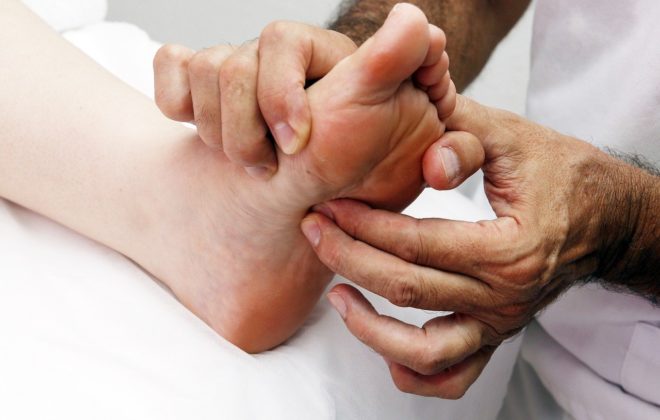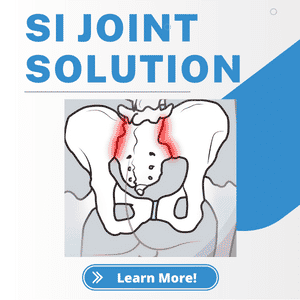Stretching Sciatic Nerve: 5 Top Stretches And Exercises To Try

Sciatic nerve pain can be caused by compression or irritation of the sciatic nerve, resulting in burning pain, tingling, numbness, and weakness in the lower back, buttocks, and legs.
While there are several possible causes of sciatica, stretching and exercise can often help to relieve the symptoms.
In this blog post, we’ll explore six top stretches and exercises to try for stretching the sciatic nerve and reducing pain.
Additionally, we’ll discuss other ways to relieve sciatic nerve pain, including heat rubs, massage techniques, and chiropractic care. We’ll also cover tips for sleeping with sciatic pain and how long it can take for sciatica to heal.
What Causes Sciatic Nerve Pain?
Sciatic pain is usually caused by irritation of the sciatic nerve by a herniated disc, spinal stenosis, or pregnancy. Other causes include injuries to the spine, tumors, and certain infections.
Sciatica vs. Piriformis Syndrome
Sciatica and piriformis syndrome are both painful conditions with often similar symptoms. Sciatica is a general term used to describe pain that radiates along the sciatic nerve, which runs from the lower back down the back of each leg.
Piriformis syndrome is a condition in which the piriformis muscle, located deep in the buttocks, is thought to spasm and compresses the sciatic nerve, causing pain, tingling, numbness, and weakness in the leg.
Signs and Symptoms
Sciatica pain can include burning pain, tingling, numbness, and weakness in the lower back, glutes, and legs. Piriformis syndrome symptoms can also include pain, tingling, numbness, and weakness in the lower back, buttocks, and legs, but may also include pain in the hip, gluteal area, and/or thigh.
Can You Really Loosen Up A Sciatic Nerve?
While technically there is no need to loosen the sciatic nerve, what we want to accomplish is reducing compression on the nerve from surrounding structures, as well as promoting smooth sliding of the nerve through its “sheath”.
Sciatic nerve glide would be a good choice to treat sciatica symptoms for some. This is true regardless if the origin of the problem is the piriformis region, or the lumbar spine. It is important to note that you should speak with your health professional before doing any nerve sliding.
Stretches For Sciatica
Hamstring Stretch
Stretching the hamstrings can be a great way to address tension, but depending on the level of pain you have, you may not tolerate much of it. The key is to maintain the curve in the lumbar spine when bending forward, as well as keeping the knees comfortably bent.
While maintaining this optimal lower spine position, bend forward to accomplish the standing hamstring stretch. Hold for up to 30 seconds, and repeat 2-3 more times.
Standing Calf Stretch
Since the sciatic nerve runs down the back of the leg to the bottom of the foot, stretching the calves can assist with modulating the nerve pain.
Split your stance with one foot forward and the other slightly behind you, while maintaining both feet fully flat on the floor. While keeping the back knee straight, shift your weight forward until you feel a stretch in the back leg calf.
Hold for up to 30 seconds, and repeat 2-3 more times.
Crossover Glute Stretch
Lay on your back with one leg straight. Place the other foot on the outside of the knee of the straight leg. Gently pull your knee across your body and up toward the shoulder. You should feel a stretch in your glute region.
Hold for up to 30 seconds, and repeat 2-3 more times.
90-90 Glute Stretch
This is a great piriformis stretch. The front knee is bent to 90 degrees, and the opposite knee is the same out to the side.
Sit on the floor with one leg in front and the other out to the side. The front knee is bent to 90 degrees, and the opposite knee is the same out to the side. Place your hands out in front of your front leg, equal distance out from the knee. Perform an anterior pelvic tilt (arching the lower back) until you feel the stretch.
Hold for up to 30 seconds, and repeat 2-3 more times.
To get a deeper stretch, try varying the angles.
Standing Adductor Stretch
Start with a wide stance, making sure your feet point straight ahead. Knees should be very slightly unlocked. Perform a posterior pelvic tilt until a stretch is felt in groin region. Holding that stretch, turn one foot out and shift weight away from the side you wish to stretch.
Hold for up to 30 seconds, and repeat 2-3 more times.
What if Stretching for Sciatica Exercises do not Help?
If the above stretches for sciatica exercises do not help, you may need to consult with a physical therapist or spine specialist to receive a more comprehensive plan of care including a series of physical therapy.
In some cases, surgery may be recommended (if all conservative measures are exhausted). Additionally, medications, injections, and other forms of conservative treatments may be prescribed to provide relief of sciatica symptoms.
How long does it take sciatica to heal?
The length of time for sciatica to heal depends on the severity of the condition and the treatment approach taken. In some simple cases, sciatica may resolve on its own within a few weeks.
However, more severe cases may require several months or longer of movement therapy, massage therapy, physical therapy or other treatments before the symptoms improve.
Are there other ways to relieve sciatic nerve pain?
Does heat rub help sciatica? Some capsaicin products can help reduce nerve pain temporarily.
Heat rubs may provide temporary relief for sciatica pain (especially capsaicin). They help to increase circulation, relax muscles, and reduce inflammation. However, heat rubs should not be used as a substitute for medical treatment.
How do you massage a sciatic nerve?
While you can certainly apply massage techniques to the muscles and tissues around the sciatic nerve, it isn’t advisable to directly massage the sciatic nerve, especially when its irritated.
The good news is that you don’t need to anyway. General massage techniques applied to the surrounding area can improve blood flow, relax tense tissues, and reduce nerve sensitivity.
This should always be performed gently, especially at first, to gauge level of discomfort and reduce chances of getting excessively sore afterward.
Can a chiropractor fix sciatica?
While a chiropractor can help to treat and manage sciatica, there isn’t necessarily a “fix”. Through a combination of techniques such as spinal manipulation, soft tissue mobilization, and assisted stretching, a chiropractor can help to reduce the pain and discomfort associated with sciatica and improve the your range of motion.
How Should I Sleep With Sciatic Pain?
If you suffer from sciatic pain, it is best to sleep on your side with a pillow between your legs to decrease pain. A pillow top mattress may help to provide extra cushioning and support while decreasing pressure.
It may also be important to keep your spine in neutral alignment, so try sleeping on your back with a pillow under your knees. Make sure your head is also supported with the correct neck pillow. Additionally, using a lumbar support pillow may help to reduce the pressure on your lower back.
Conclusion
Sciatic nerve pain can be a debilitating condition that affects many people. Fortunately, there are several stretches and exercises that can help to alleviate symptoms and promote healing.
Additionally, other treatments such as heat rubs, massage techniques, and chiropractic care can provide relief.
It’s important to remember that healing time can vary depending on the severity of the condition, and it may take time and patience to find the best treatment approach for you.
By staying active, taking care of your body, and seeking the appropriate medical attention, you can find relief from sciatic nerve pain and get back to living your life to the fullest.
Sam Visnic
Most Popular Posts
Categories
- Deep Gluteal Pain Syndrome (8)
- Deltoids (2)
- Foam Rolling (2)
- Glutes (9)
- Hamstrings (5)
- Hypnosis for Pain (3)
- Lats (2)
- Levator Scapulae (4)
- Lifestyle (8)
- Massage Therapy (39)
- Mobility (21)
- Movement and Exercise (19)
- Muscles (22)
- Nutrition (2)
- Obliques (1)
- Pain (25)
- Pectorals (3)
- Piriformis (3)
- Plantar Fasciitis (11)
- Psoas (11)
- Quadratus Lumborum (3)
- Quadriceps (2)
- Rhomboids (3)
- Sciatica (1)
- Serratus Anterior (1)
- SI Joint (14)
- Sternocleidomastoid (1)
- Stretching (18)
- Subscapularis (1)
- TMJ (2)
- Trapezius (1)
- Uncategorized (12)









